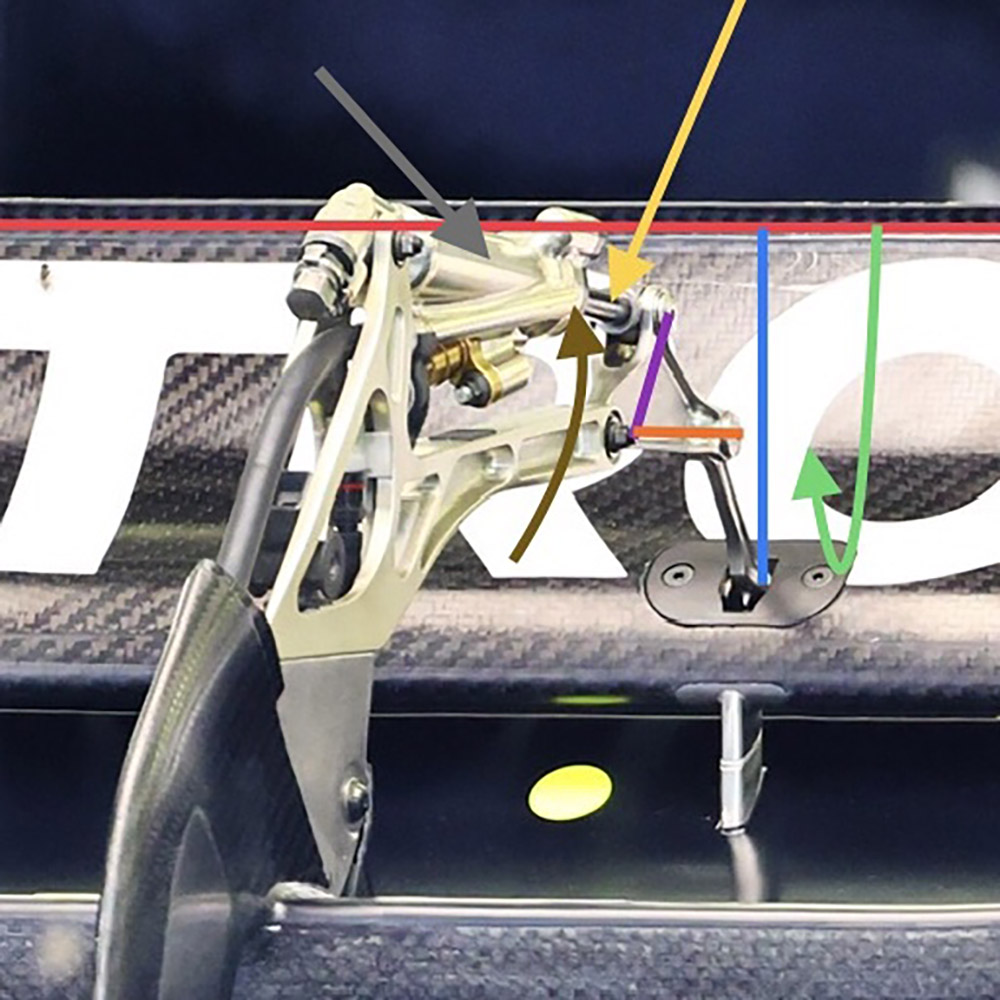We don’t always see the detail of what makes these things work, and I am sure every Formula 1 team has different solutions, but Mercedes kindly left its DRS actuator exposed in Bahrain on Thursday and in full view for me to have a look at.
The DRS actuator – attached to the rear wing of F1 cars – is of course the key final tool in the process of a driver deploying DRS.
What a DRS actuator looks like

The red line is the flap pivot line.
The blue line is the arc the flap will go through when the DRS is activated.
The green arrow line is the curve the DRS will follow to open up the slot gap.
The purple line is one leg of the actuation rocker.
The orange line is the other leg of the actuation rocker.
Where the purple and orange line intersect is the rocker pivot point.
The yellow arrow is the actuator shaft.
The grey arrow is the actuator body.
How a DRS actuator works
To open the DRS, hydraulic fluid will be forced into the end of the actuator at high pressure, perhaps 200bar (gold/brown arrow). This fluid will fill the void that is the internal diameter of the actuator body (grey arrow) and the external diameter of the actuator shaft (yellow arrow).
This pressure will reduce the length of the actuator where we see the shaft (yellow arrow), pulling the rocker with it. If for any reason, the DRS is opening too far or if it goes into an aerodynamic flutter, which we have seen on many occasions with various teams, the team can fit a thin spacer around this shaft to reduce its stroke.
To close the actuator, that pressure will be removed and hydraulic fluid, again at high pressure, will be forced into the other side of the internal actuator piston.
Doing it this way means that the force generated from the same hydraulic pressure is greater to close the DRS than it is to open it. This is because the surface area of the piston on one side is greater than the surface area on the other side thanks to the area of the actuator shaft.


